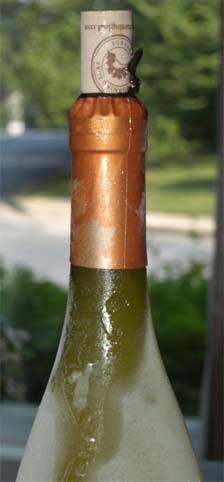The temperature at which a wine is served matters. And, here's why. The 'proper' serving temperature will ensure that you get the best experience from your wine. Serve it too cold or too warm and you can loose a lot of the wine's character.
This is partly due to your nose and how a wine's aroma works along with its taste. A wine’s aroma is greatly affected by the wine's temperature. A cold wine will have less of an aroma because fewer of the volatile compounds will be released from the wine. Conversely, a warmer wine will easily release these compounds and give you an opportunity to experience the wine's full aroma.
Then there's the way a wine tastes. Serving a white wine too cold will mute its fruit flavors. White wines taste good when they are served cool because of their acidity and negligible tannin. The fruit flavors are zippy and bright and a bit of a chill will enhance this. But full bodied white wines that have been aged in oak (e.g., Chardonnay) are best served not quite so cool to allow you experience the buttery and vanilla flavors that oak imparts.
Serving a red wine too cold will emphasize its acidity, bitterness and tannin. But, serving a red wine at room temperature is a bit too warm and can emphasize the alcohol, yielding a burning sensation in your throat.
So, here are some general guidelines for the 'proper' serving temperatures of wines:
Sparkling Wine: 42° - 50° F
Light Whites: 46° - 54° F
Full Bodied Whites: 54° - 60° F
Rosé: 45° - 55° F
Light Reds: 50° - 54° F
Medium Reds: 57° - 63° F
Full Bodied Reds: 59° - 65° F
While most people don't have specialized multi-zone wine refrigerators to precisely control their wine temperatures, or take the time to use a fancy wine thermometer, here are a couple quick rules-of-thumb.
Sparkling wine can be stored directly in a kitchen refrigerator and removed 30 minutes prior to serving
White wine can be placed in a kitchen refrigerator 30-60 minutes before serving. Or, if it's been stored in a kitchen refrigerator, simply remove it 30 minutes before serving
Red wines can be placed in a kitchen refrigerator for 30 minutes prior to serving
If you really like your red and white wines at kitchen refrigerator temperatures (~34° F) or your red wines at room temperature, go ahead and continue enjoying them. But at some point, give these temperature suggestions a try. You just might find that your favorite wines are even better at the recommended temperatures. Cheers!



